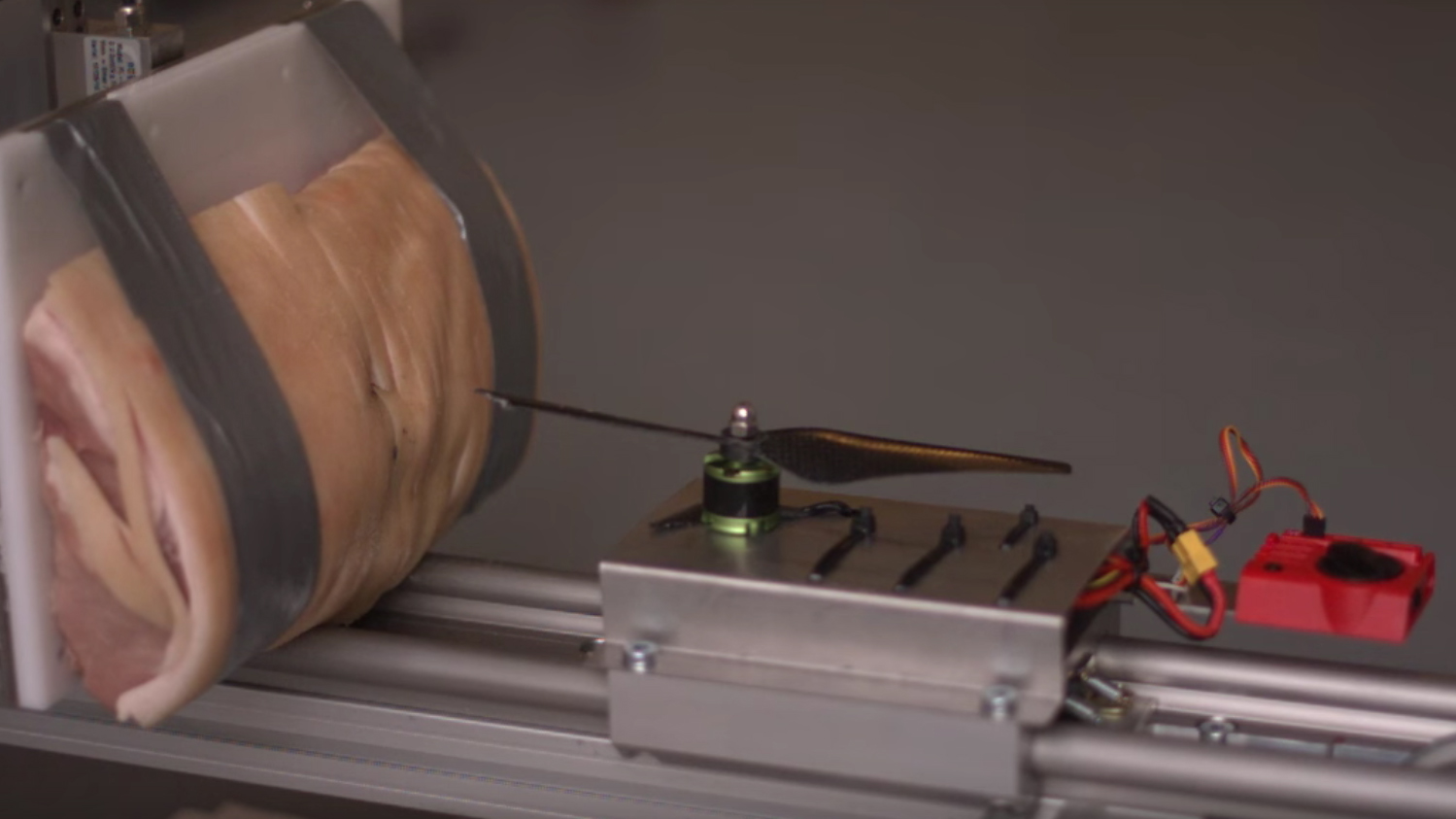This pork roast will demonstrate what happens when a drone hits a human
This pig won't fly

Drone use is on the up, and so are all the risks that come with it. While they're already proving pests for airplanes, we also need to be aware of other dangers - like, what happens if a hobby drone smacks you in the face?
Aalborg University's Drone Research Lab in Denmark has set out to discover just that, setting a rotor on a collision course with a pork roast.
It might sound a bit silly, but it's for serious research. "The objective is to examine the consequences when different kinds of drones hit people, animals, cars, glass panes and other obstacles they may encounter in their path," says drone lab director Anders la Cour-Harbo.
The team are still optimizing the technology, but below you can see a slow-motion video of the first experiments, which were done for adjusting the purpose of adjusting the catapult.
Getting to the meat of it
The catapult, which is built of aluminium, is almost three meters long and can hurl a 1kg drone at up to 15 meters per second. The plan is to upgrade the catapult for bigger drones and faster speeds as the team get more experienced.
The university has also teamed up with Aalborg University Hospital to conduct the experiments, but says it's too early to make any conclusions just yet.
Still, Cour-Harbo calls the early attempts "interesting", adding that they "clearly show what could happen when a regular hobby drone hits a human".
Get daily insight, inspiration and deals in your inbox
Sign up for breaking news, reviews, opinion, top tech deals, and more.
While it might seem obvious that a rotor blade would cut uncooked meat at that speed, the team are aiming to get some consistencies that translate to meaningful data.
Hugh Langley is the ex-News Editor of TechRadar. He had written for many magazines and websites including Business Insider, The Telegraph, IGN, Gizmodo, Entrepreneur Magazine, WIRED (UK), TrustedReviews, Business Insider Australia, Business Insider India, Business Insider Singapore, Wareable, The Ambient and more.
Hugh is now a correspondent at Business Insider covering Google and Alphabet, and has the unfortunate distinction of accidentally linking the TechRadar homepage to a rival publication.
